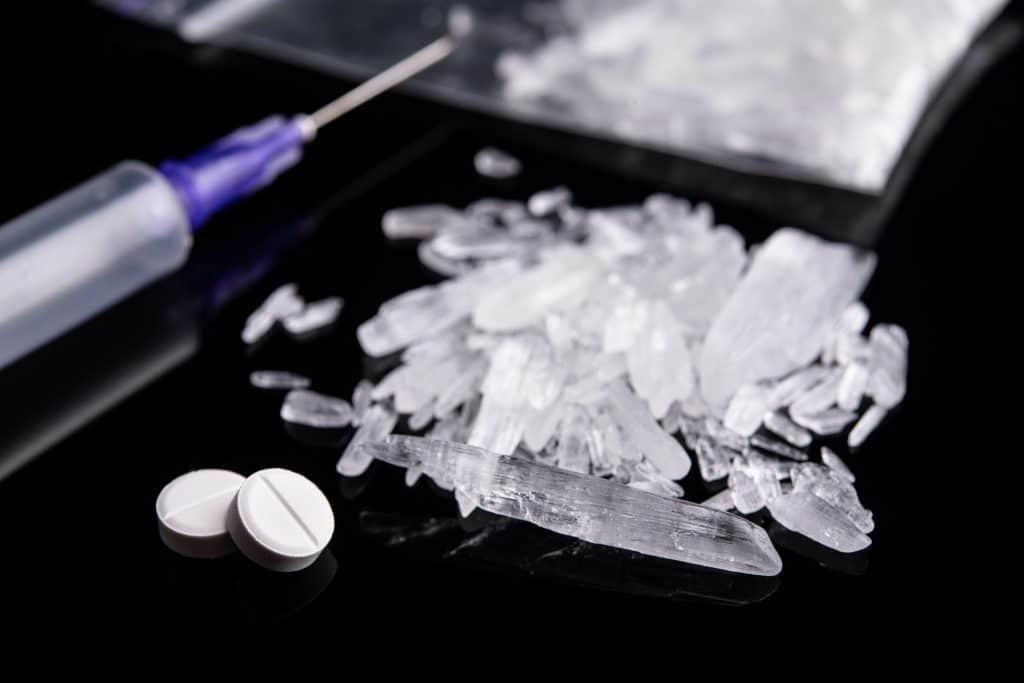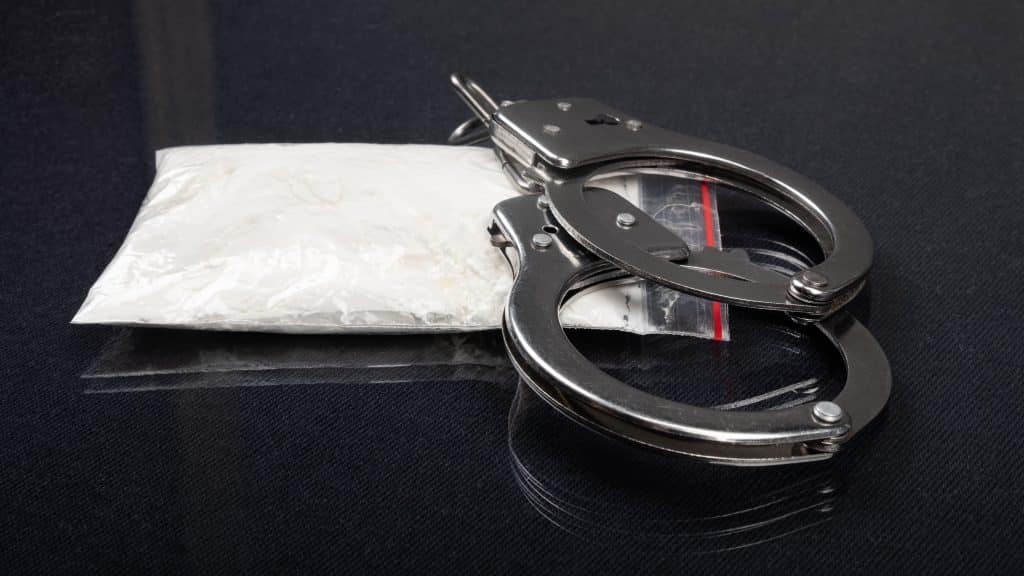Opioids are all over the US, cocaine is still heavily associated with Colombia, and Syria is spoken of as the new hub for captagon manufacture. Now, Myanmar joins the ranks, as one of the biggest producers of meth; with Thailand as one of the biggest buyers.
Myanmar and its history with drugs
Myanmar (Burma), is a country in the west part of mainland Southeast Asia. As of 2017 it had approximately 54 million inhabitants; and borders Bangladesh, India, China, Laos, and Thailand. Like many other poor countries, it was taken over by a big world power, Britain, which held control from 1824-1948. Since then, there has been much civil war, and military dictatorship. This has overridden all attempts at democracy; including coup d’é·tat efforts whenever someone is elected democratically. This happened after the most recent 2021 elections. This environment has led to an instability that allows mass illicit drug trades to thrive.
This is not the first time Myanmar has been associated with major drug production. Back in the 1960’s and 1970’s, Myanmar made a name for itself as one of the biggest opium producers in the world. According to UNODC (United Nations Office on Drugs and Crime), most of the opium cultivation took place in Shan State, a large rural area on the East side of the country, which borders China, Laos, and Thailand. There are a number of armed groups (militias, rebels, and insurgents) within the area to protect the drug trade.
Myanmar held its place as a top opium producer for many decades; though things started to decline in the 1990’s. This was mainly due to an effort by the ruling military junta called the ‘Tatmadaw.’ The group employed tactics like aerial spraying to kill large crop farms, and other methods to exterminate opium farms.
Cool you stopped by. We offer direct email updates via the Cannadelics Weekly Newsletter, which also gets you prime offers on all kinds of awesome products, like cannabis buds, vapes and related paraphernalia, edibles, smoking devices, cannabinoid compounds (like delta-8), and a ton more. Come, get yourself stoned responsibly!
Why did it happen? The Myanmar government had not done much until that time, essentially turning a blind eye to the trade. And it might have continued that way, if not for international pressure from countries like China (which uniformly hates opium due to the opium wars), and the US (which we already know loves to get involved in other country’s issues, whether it has a reason or not.)
The US probably gave a reason, like fear of it being trafficked to the US. Which is funny considering the country subsequently started the much worse synthetic opioid epidemic, and continues to allow this through regulation. But then, it can’t collect tax money from an illegal industry, only from a legal one.
Crackdown on opium in Myanmar leads to rise of meth
The crackdown worked, as lots of crops were exterminated. But that also meant that a lot of people were left without a job, and a source of income. And many of those people were not happy to see their business disappear into thin air.
In an act reminiscent of Colombia using its established cannabis lines to get cocaine into America, in Myanmar, these opium pathways led to the production and trafficking of another drug, methamphetamine. Opium requires fields to grow poppies, which are harder to hide. Meth, on the other hand, is made in hidden labs, making it that much harder to root out. All that’s needed are some chemicals like pseudoephedrine, and the product is easily made without eyes on it.
As the Shan State is located right next to China, its easy to import the chemicals needed for production. Regardless of how much China might not like opium, the country is a major supplier for the raw materials of worse drugs like meth; which go to places like Myanmar and the US. And fentanyl, which gets produced in Mexico to be shipped up to the US.
How much meth is produced in the country? As always with illegal industries, we don’t know exact answers. All information comes from arrests and seizures, and those numbers are used to estimate total production amounts. For example, let’s assume that its assumed that only one in 10 shipments gets intercepted, and each shipment averages 10 kg. If there are five interceptions, it would be calculated as 50 shipments of 10 kg, or 500 kg total. How precise is this? Not very, but it still gives some idea. Best to remember there’s no official reporting for illegal industries.

UNODC estimated in a 2019 report, that in Myanmar, the meth trade is worth approximately $61 billion yearly. In fact, meth offers the country larger profit margins than dealing in opium and heroin. As happens with such industries, organized criminal entities have gotten involved, and the purest forms of the drug get trafficked to higher-priced countries like Japan, Australia, and New Zealand.
Thailand, and its resulting meth issues
The rising production and industrialization of meth, has brought a lot of money into Myanmar. It’s also predictably causing meth issues in other countries, like the neighboring Thailand. While I often write about Thailand for its progressive cannabis policies, and eye on a magic mushrooms industry; the current meth situation is now a growing problem in the country. And in this case, it’s a drug without a ton of medical benefits, though they do exist. Something exemplified by a Schedule II placement in the US…(while cannabis is Schedule I.)
According to a VOA news report from January, 2023, since Myanmar started production, meth use in Thailand shot up 30% in the last year alone. This makes sense. The drug is now cheaper with production right next door. And as a neighboring country, Thailand is much easier to get it to, than say, America. A nationwide survey in Thailand, led by Thailand’s Chulalongkorn University, recently turned back results that meth increased among 18-65 year olds. It said numbers went up from approximately 44,500 last year, to 57,900 this year. These numbers are low, says the head of the University’s Center for Addiction Studies, who explained that many won’t admit to use.
Other surveys by Thailand’s Office of the Narcotics Control Board, which uses much wider sampling, found that the number is actually in the hundreds of thousands. This makes more sense with a population of around 72 million; and the production country next door for easy access. In Thailand, the drug is sold as tablets, and called ‘yaba’ which translate to ‘crazy medicine.’
To give an idea on price changes and availability, it’s now possible in some parts of Thailand to buy a tablet for between $0.50-$0.90 in the low-grade market. This is approximately ¼ the price it used to be. The premium market also saw a shift, with top shelf crystal meth prices decreasing from between $50-60 to as low as $14-29.
In order to deal with this very quickly exploding problem, Public Health Minister Anutin Charnvirakul mentioned instituting a new policy in January, which was introduced February 2nd. If it passes, this law stipulates that a person in possession of even a single meth pill, can be prosecuted as a dealer. Current law dictates that possession of 15 tablets or less classifies the possessor as a user, which means they can accept treatment to avoid jail time. Dealers on the other hand, face up to 15 years in prison, with an extra five added on if they are found selling to minors.

No formal change was made yet. The new update must be approved by the cabinet before going into effect. As of February 22nd, no formal proposal from the Public Health Ministry was submit; at least according to a government spokesperson, via VOA. We’ll have to wait and see if this policy becomes a real thing. Regardless of legal actions, the country is already increasing border patrols on its borders with both Laos and Myanmar.
Does the hype match the danger?
For many drugs, the policies out there don’t match the danger level of the drugs in question. Think about how many people died in the cannabis trade, for a no-death toll drug. Perhaps this is the ultimate example of laws and the hype, not matching the actual danger level. This isn’t that different from what’s going on with Syria and the captagon trade. Captagon is an amphetamine-like drug, which I couldn’t find one death statistic for. So big trade or not, its not the most dangerous drug. Especially considering how much usage there is. Does this make it good? No. But does it make the response to it insane? Yes!
Yet, what was it reported that Jordan is doing? Allowing a shoot-to-kill policy for anyone trafficking it over the border. Which means there’s an automatic death/injury policy, for moving something which itself isn’t attached to a death toll. Ultimately, while drugs can be dangerous without a death toll, when looking at the moves of big countries, and the wars they wage on illegal drugs; much more damage is caused through that violence, than any drug that doesn’t kill anyone.
I don’t remember seeing anything about major health issues involved with captagon, insinuating this is about governments not wanting to lose profits to illegal markets, whether from manufacture in a home country, or import from another. On the other hand, sometimes its good to limit some drugs. The US would be smart to limit opioids, which it has never done. In the case of meth? You’ve certainly got a death and disability toll; though the jury’s out on whether the violent actions to prevent it, match the actual threat.
While drugs like cannabis and psychedelics have no real death threat, methamphetamine was responsible for anywhere up to 23,837 deaths in 2019 in the US, according to NIH (National Institute on Drug Abuse). This number is actually for all psychostimulants, which include cocaine. And it doesn’t rule out that other drugs were also used. Another organization, NIHCM (National Institute for Health Care Management) put the number at 23,776 for 2020, which it separated from cocaine numbers; though the deaths could still involve other substances. So yes, meth causes death, meaning in this case, its not just hype, there’s actual danger involved.
Conclusion
It’s hard to say what will happen next with Myanmar and its new meth industry, or Thailand and its new meth problem. Perhaps one of the more interesting things to get out of all this, is the incredible need people seem to have to get high, almost regardless of substance. These trades exist because of how desperate people are for something that feels good. Doesn’t it make more sense to build better systems to make sure people of a country are treated well? Might make some of these drug issues…go away.
Welcome to the site! Thanks for making it to Cannadelics.com; an independent news platform geared toward the cannabis and psychedelics industries of today. Come around frequently so you stay up-to-date, and check out the Cannadelics Weekly Newsletter, to ensure you always know what’s going on, first.
The post Myanmar, Thailand, and the Growth of Meth in Southeast Asia appeared first on Cannadelics.
Via https://cannadelics.com/2023/03/07/myanmar-thailand-and-the-growth-of-meth-in-southeast-asia/
source https://rosalinaklerkx.weebly.com/blog/myanmar-thailand-and-the-growth-of-meth-in-southeast-asia
No comments:
Post a Comment